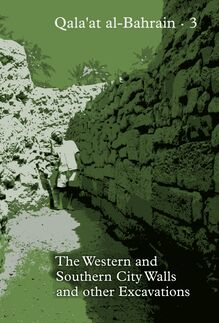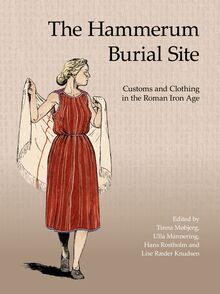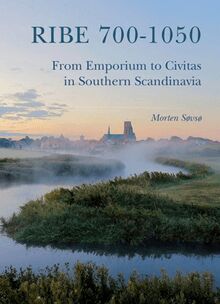Urban Diaspora , livre ebook
538
pages
English
Ebooks
2021
Obtenez un accès à la bibliothèque pour le consulter en ligne En savoir plus
Découvre YouScribe en t'inscrivant gratuitement
Découvre YouScribe en t'inscrivant gratuitement
538
pages
English
Ebooks
2021
Obtenez un accès à la bibliothèque pour le consulter en ligne En savoir plus
Publié par
Date de parution
13 janvier 2021
Nombre de lectures
0
EAN13
9788793423565
Langue
English
Poids de l'ouvrage
25 Mo
Publié par
Date de parution
13 janvier 2021
Nombre de lectures
0
EAN13
9788793423565
Langue
English
Poids de l'ouvrage
25 Mo
URBAN DIASPORA
This is a book on the rise and fall of diasporic communities
in Early Modern urban centres in Denmark and Sweden. It
contains 17 chapters written by archaeologists, historians
and scientists, ranging from in-depth studies of artefacts,
biofacts and archaeological features to large-scale analyses
of community formation among natives and migrants of
multiple origins. The plethora of sources and approaches
afforded by the numerous disciplines involved enables a
signicant new insight into the creation and recreation of
migrant communities in these Early Modern towns.
Moesgaard Museum The Rise and Fall of Diaspora Communities
in Early Modern Denmark and Sweden
Jutland Archaeological Society Archaeology – History – Science
Dette materiale er ophavsretsligt beskyttet og må ikke videregives.
113585_cover_urban diaspora_.indd 1 03/12/2020 08.54URBAN DIASPORA
1
113585_urban diaspora_cc20.indd 1 02/12/2020 11.432
113585_urban diaspora_cc20.indd 2 02/12/2020 11.43URBAN DIASPORA
The Rise and Fall of Diaspora Communities
in Early Modern Denmark and Sweden
Archaeology – History – Science
Edited by Jette Linaa
Moesgaard Museum
Jutland Archaeological Society
3
113585_urban diaspora_cc20.indd 3 02/12/2020 11.43Urban Diaspora
The Rise and Fall of Diaspora Communities in Early Modern Denmark and Sweden
Archaeology – History – Science
© The authors and Jutland Archaeological Society 2020
Layout and cover: Jens Nygaard
Graphics: Lars Foged Thomsen
Translation and language revision:
Anne Bloch and David Earle Robinson, HSLS, Ebeltoft
E-book Production by Narayana Press, Gylling
Type: Palatino LT Std
Jutland Archaeological Society Publications 112
ISBN: 978-87-93423-56-5 (e-pdf)
ISSN: 0107-2854
Published in conjunction with Moesgaard Museum
Jutland Archaeological Society
Moesgaard
DK-8270 Højbjerg
Distribution:
Aarhus University Press
Published with the support of:
Landsdommer V. Gieses Legat
Front cover:
Isaac Isaacsz, Allegory of the Sound, 1622, SMK – National Gallery of Denmark no. KMSsp801.
4
113585_urban diaspora_cc20.indd 4 02/12/2020 11.43Contents
Editor´s preface .......................................................................................................................7
Chapter 1 Introduction ............................................................................................................................9
Jette Linaa
Chapter 2 The archaeology of Early Modern Aalborg, c. 1450-1650 ................................................25
Christian Vrængmose Jensen
Chapter 3 The immigrants in Aalborg 1550-1650 .............................................................................. 39
Jakob Ørnbjerg
Chapter 4 Using plant remains to identify diaspora communities in Late
Medieval and Early Modern Aalborg ............................................................................... 75
Peter Mose Jensen
Chapter 5 The archaeology of Elsinore and the Sand ....................................................................... 95
Liv Appel
Chapter 6 The townscape of Elsinore ................................................................................................ 119
Liv Appel & Jette Linaa
The making of diaspora communities. Networks of origin, credit, Chapter 7
religion, marriage and spiritual kinship among migrants and
Danes in Elsinore 1550-1660 .............................................................................................. 151
Jette Linaa
Chapter 8 The materiality of longing and belonging: Diaspora communities
reected in probate inventories ........................................................................................ 191
Jette Linaa
Chapter 9 Plant resources in Elsinore in Early Modern times as revealed by
archaeobotanical analyses ................................................................................................ 239
Sabine Karg & Christian Flensborg
th thChapter 10 Faunal remains from the 16 -17 -century settlement at the Sand, Elsinore .................. 253
Inge Bødker Enghoff
Chapter 11 Stove tiles as a source of information about daily life in migrant
households in Aalborg and Elsinore ............................................................................... 307
Rainer Atzbach
Chapter 12 Pottery in Elsinore and Aalborg ....................................................................................... 331
Jette Linaa
Chapter 13 Migration and immigrants in Nya Lödöse 1473–1624 ................................................... 377
Daniel Larsson & Christina Rosén
Chapter 14 Traces of a foreign kitchen ................................................................................................ 421
Jens Heimdahl
Identity expressed through sh consumption ...............................................................447Chapter 15
Emma Maltin
Chapter 16 Pottery from Nya Lödöse in a diaspora perspective ..................................................... 473
Kristina Carlsson
Chapter 17 The rise and fall of diaspora communities in Denmark and Sweden ........................ 495
Jette Linaa
Sources ................................................................................................................................. 510
CONTENTS 5
113585_urban diaspora_cc20.indd 5 02/12/2020 11.436 JETTE LINAA
113585_urban diaspora_cc20.indd 6 02/12/2020 11.43Editor´s preface
This is a book about diaspora communities. The in- this book will be disappointed: It was not written
clusion of “the rise and fall” in the title is a reference for or against migration in the present, but merely
to Edward Gibbons’ The History of the Decline and Fall to address migration in the past, and it does so from
of the Roman Empire, the ground-breaking six-volume a scientic, not a political, point of view. If a reader
historical work on the Roman Empire, published should nd that a book on past diaspora
commu1776-1789, which Gibbons considered his life’s work nities sheds light on diaspora communities in the
and which has exerted a signicant and widespread present, then this adds to the value of the book, but
inuence ever since. When we borrow from this title, no such conclusions are drawn by the authors – that
it is in no way an attempt to claim similar fame or step is left to readers.
inuence, but more to stress Gibbons’ complaint This book about communities would never have
that such works tend to take over the lives of their seen the light of the day without a community of
authors. The phrase is also borrowed from David people and institutions, which supported our
efBowie’s album The rise and fall of Ziggy Stardust and forts in one way or another. Firstly, we would like to
the spiders from Mars, about an alien coming to earth thank The Danish Research Council/Humanities for
on a mission to save the world. This book shares supporting the project nancially, and Moesgaard
neither Gibbon’s all-encompassing knowledge, nor Museum for hosting, administering and supporting
Bowie’s creative genius. But it does reect Gibbons’ the project in numerous ways, as well as funding the
belief that reason and rational thought lie behind costs of production and printing. Landsdommer V.
progress in human history and also Bowie’s belief Gieses Legat is thanked for co-funding the
printin a mission, which is necessary to keep a multifac- ing costs. We also owe a debt of gratitude to the
eted project on track, because this book is the nal participating institutions: Arkeologerna, National
and concluding publication of the research project Historical Museums, Sweden, Bohusläns Museum,
“Urban Diaspora – Diaspora communities and ma- Danish Centre of Urban History, Historical Museum
teriality in Early Modern urban centres”, funded of Northern Jutland, National Museum of Denmark,
by the Danish Council of Independent Research/ Moesgaard Museum, Museum of Northern Zealand,
Humanities, project no. DFF – 4001-00168. The project University of Copenhagen, University of Gothenburg
ran from 2014 to 2018, and constituted an historical and Aarhus University. I would like to extend
personarchaeological analysis of diaspora communities in al thanks to the project members for their dedication
the Danish towns of Aalborg and Elsinore and the during the course of the project: Chapters 2, 4 and
Swedish town of Nya Lödöse between 1473, when 9 to 16 were concluded in 2017, Chapters 3, 7 and 8
this migrant-dominated town was founded, and in 2018 and Chapters 5 and 6 in 2019. The various
1658, when the diaspora neighbourhood in Elsinore sections of this book have been presented at
numerwas destroyed during the Second Nordic War. Even ous conferences, workshops and seminars over the
though the phrase “rise and fall” in the title refers course of the years, and we owe a debt of gratitude
to the development of diaspora communities in the to many colleagues from numerous disciplines, who
three towns within this timeframe, and it was a rise have discussed our ideas generously and openly.
and fall – as the book will show, it refers neither to We also owe our thanks to Jutland Archaeological
the initial rise nor the denitive fall of diaspora com- Society editor Jesper Laursen, to the translators from
munities in Scandinavia: Research has long shown Danish and revisors of the English, Anne Bloch and
that migrants and migratory movements have been David Earle Robinson, Heritage Science & Language
part of Scandinavian history since the Stone Age, Services, and to graphic designers Lars Thomsen and
and anyone who follows the news knows that they Jens Nygaard, Moesgaard Museum, and to Caspar
remain a part of Scandinavia today. So the specic Skaaning Andersen, Department of Archaeological
rise and fall of the communities targeted in this IT, Moesgaard Museum. Finally, we extend our
gratibook does not represent beginnings and ends, but tude to the anonymous



